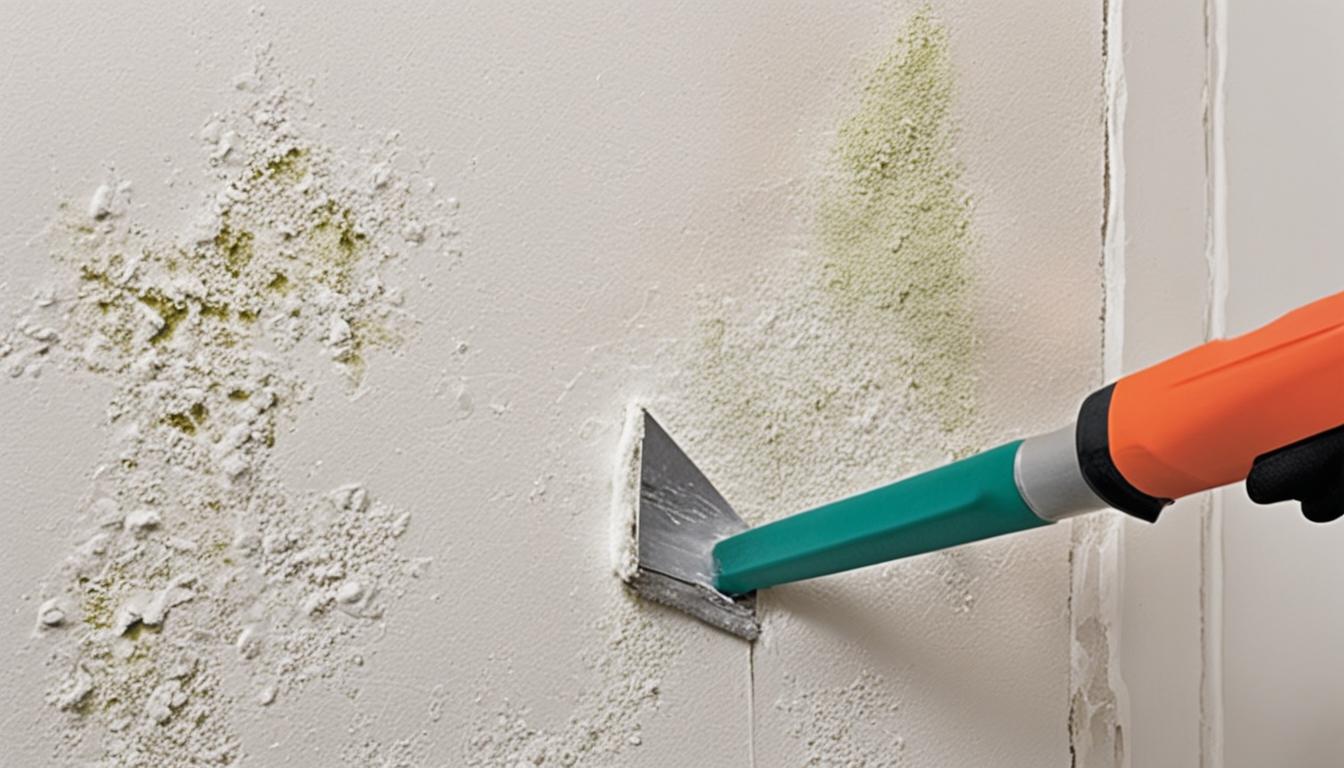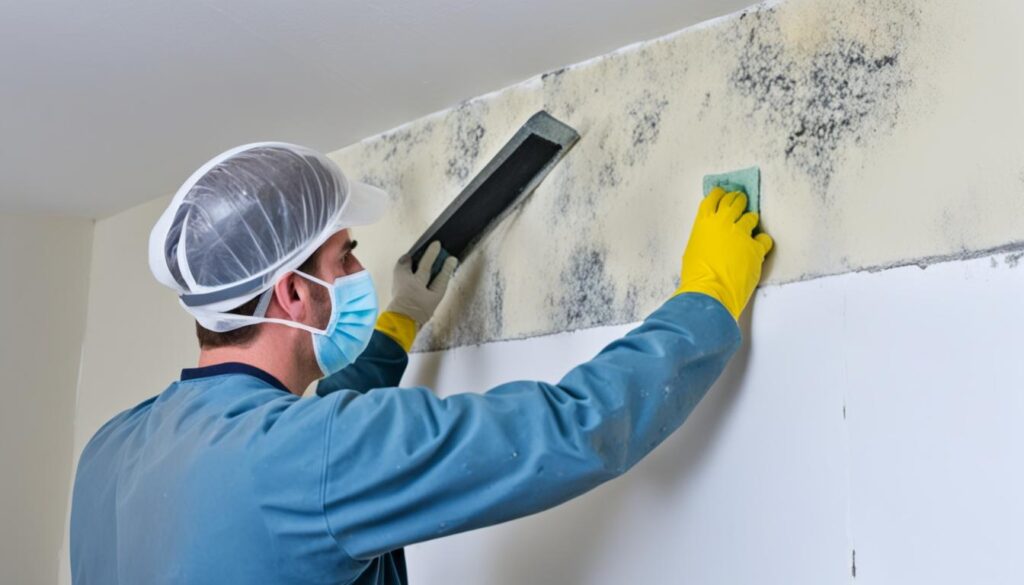
Effective Drywall Mold Repair Guide
Welcome to our comprehensive guide on how to effectively repair mold in drywall. Dealing with mold growth can be a daunting task, but with the right techniques, you can restore the integrity of your drywall and create a safe and healthy environment for your home and family.
In this guide, we will walk you through step-by-step instructions on how to repair mold damage in drywall. From identifying the extent of the mold growth to removing and treating the affected areas, we will provide you with the knowledge and tools to handle the repair process yourself.
Whether you are dealing with minor patches of mold or more extensive damage, our guide will equip you with the necessary skills to tackle the problem effectively. By following these techniques, you can save time and money while ensuring the long-term integrity of your drywall.
Key Takeaways:
- Identify the extent of mold growth in your drywall before starting the repair process.
- Remove mold from drywall using proper safety measures and equipment.
- Treat the affected areas with mold remediation solutions to prevent future growth.
- Consider hiring professional help if the mold damage is extensive or if you have health concerns.
- Maintain a clean and dry environment to prevent future mold growth in your drywall.
Step-by-Step Instructions for Drywall Mold Repair
In this section, we will walk you through the step-by-step process of repairing mold damage in drywall. Whether you are dealing with minor mold growth or extensive damage, these detailed instructions will help you effectively handle the repair yourself.
1. Identify the Extent of the Mold Growth
The first step in repairing drywall mold damage is to assess the extent of the mold growth. Inspect the affected area carefully, looking for visible signs of mold on the walls. Pay attention to discoloration, musty odors, and any damp or humid areas that may contribute to mold growth. It’s important to determine the size and severity of the mold problem before proceeding with repairs.

2. Prepare the Work Area
Before starting the repair process, it’s essential to prepare the work area properly. Clear the room of furniture, cover the floor with a drop cloth, and seal off the area with plastic sheets to prevent the spread of mold spores. Wear protective gear, including gloves, goggles, and a mask, to minimize exposure to mold and ensure your safety.
3. Remove the Mold-Infested Drywall
To repair mold damage on drywall, you’ll need to remove the affected sections. Use a utility knife to cut away the mold-infested drywall, ensuring that you remove all visible traces of mold. Be cautious not to disturb the mold spores during this process, as it may lead to further contamination.
4. Treat the Remaining Drywall
After removing the mold-infested drywall, it’s crucial to treat the remaining surfaces to prevent the regrowth of mold. Use a mixture of water and detergent to clean the exposed areas thoroughly. Scrub the walls gently with a brush, ensuring that you reach all the nooks and crevices. Rinse the walls with clean water and allow them to dry completely.
5. Repair and Replace Drywall
Once the treated walls have dried, it’s time to repair and replace the damaged drywall. Measure the dimensions of the removed sections and cut new drywall accordingly. Secure the new drywall firmly in place with screws or nails, ensuring a seamless fit with the surrounding surfaces.
6. Apply Mold-Resistant Primer and Paint
To further protect your drywall from future mold growth, apply a mold-resistant primer to the repaired surfaces. Let the primer dry completely, and then proceed to paint the walls with a mold-resistant paint. These specialized products provide an extra layer of defense against mold, keeping your newly repaired drywall safe and pristine.
7. Monitor and Maintain
After completing the drywall repair, it’s essential to monitor the area regularly for any signs of recurring mold growth. Keep the room well-ventilated, control moisture levels, and address any water leaks promptly to prevent further damage. By taking these proactive measures, you can maintain a mold-free environment and ensure the longevity of your drywall.
Conclusion
In conclusion, effectively removing mold from drywall and repairing water-damaged areas is crucial for maintaining a safe and healthy home environment. By promptly addressing mold issues and following the techniques outlined in this guide, you can successfully restore your drywall to its original condition and prevent further damage.
The best way to remove mold from drywall is to start by identifying the extent of the mold growth. Thoroughly inspect the affected areas, checking for any signs of moisture or discoloration. Once identified, it’s important to take immediate action to prevent the mold from spreading and causing additional damage.
When it comes to repairing water-damaged drywall from mold, the key is to first remove any moisture sources. This may require fixing leaks, improving ventilation, or addressing any other issues that contribute to the excessive moisture. Once the source is resolved, carefully remove the affected drywall, ensuring you take necessary precautions to protect yourself from mold spores.
After removal, treat the affected areas with a mold-specific cleaner and allow them to thoroughly dry. It’s essential to ensure the affected areas are completely dry to prevent future mold growth. Finally, repair the drywall using appropriate materials and techniques, restoring its structural integrity and appearance.
Remember, in cases of significant mold damage or if you have concerns about your health, it’s recommended to seek professional assistance. They have the expertise and equipment to handle more extensive mold remediation tasks effectively.
Addressing mold issues promptly and following the proper techniques is the key to successful mold removal and drywall repair. By doing so, you can create a safe and healthy living environment in your home.




